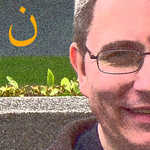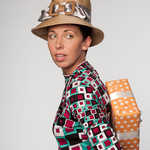[ Note: this is cross-posted from a newsletter I send out every Sunday evening. ]
How many lives have you lived? Let me count a few of mine: Video games in suburban basements and breakfast at Denny’s at three in the morning. Saturday tailgating and all-nighters in undergrad libraries. Sardine commutes and noisy bars and standing in line for ramen; museums on weekends and brunch and rooftops and waiting in your office clothes for the train at the end of a too-long day. More recently, the inverted metropolis: Writing from home, going on walks when everyone’s at work, operating on the schedule of au pairs and stay-at-home parents and NYU students and broke artists and those for whom money is of no concern. This year I’ve had tastes of Main Streets that shut down half the week and Winesburg, Ohioan towns where I’ve stayed long enough to hear their stories but not long enough to learn their secrets. There are so many more modes of living and I want to live them all. Why? I’m not sure, exactly. Reconnaissance, I suppose, but for what? I have a hunch but I need a few secrets, too.
M. rents a 24-foot yurt in the Catskills. He and his girlfriend are thinking about leaving Brooklyn and they’ve been driving up on weekends and using it as an outpost to explore the Hudson Valley. I ask if I could yurt-sit for a few days during the week and M. says yes and sends me a PDF entitled “New Yurt City” with driving directions and things to do. “Yurt the best,” I email back and the puns end there.
M’s yurt sits with several others at the end of a gravel road in the woods on property owned by Ward, an artist who invented those pinscreen toys that were popular in the eighties and nineties and sold at science museum gift shops and stores like The Sharper Image. You have probably pressed your face into one.
Yurts are Mongolian in origin, traditionally round portable collapsible lattice-frame dwellings covered in fabric and insulated with felt the nomadic peoples made from sheep’s wool. The VW Buses for a different topography. The structures hold up to the weather of Himalayan steppes, Ward would tell me later, as there aren’t the usual flat surfaces for high winds to latch onto. M.’s yurt is a more permanent adaptation, in between a traditional yurt and a Bucky Fuller aluminum house. It’s closer to a cabin, actually; has electricity and varnished wood floors and is entered via a smaller rectangular shed that holds a kitchen and shower with running water, and a composting toilet.
I get in Monday night and successfully start a fire in the wood burning stove, an act I have trouble replicating the next day. I text M. stupid questions like, “Is there a place I go to get more kindling, or do I make it with this ax??” M. replies in good humor, tells me there’s a chopping block outside by the door. “Just remember chopping wood warms you twice,” M. says, “once when you chop it and again when you burn it.”
I spend three days in the yurt. I wake at dawn every morning because the light floods in through the oculus, the clear plastic domed circular opening in the center of the roof. I meditate under the light, go out for hikes and food, listen to records, take a nap in a hammock. After three days in a yurt, rectangular dwellings seem mildly oppressive. Corners seem silly. “If you look at the way we move through our spaces, it’s usually circular,” Ward says when he invites me over for a beer the second night. We talk about yurts, living in New York, visits to China, and he asks for advice about a Kickstarter project he’s thinking about launching. He’s soft-spoken, intelligent, cunning eyebrows, as pure an artist as I have ever met. He’s been living on the property for decades, and the furnishings in his own yurt are warm and modern and timeless in an Eames workshop kind of way. We finish our beers and he asks, “Have you seen the view?”
“What view?”
Ward takes me outside to the edge of the land and there’s a clearing. I can see for dozens of miles. The property, he tells me, sits on a ridge, and he points to the strings of twinkling lights in the distance. “That’s Massachussets. Over there’s Connecticut.”
I come back to Brooklyn and have a Tom Hanks at the end of Castaway moment. I realize: I am so wasteful. I leave the faucet on when I brush my teeth and keep the thermostat set too high. In the yurt everything demands conservation: The leftover water in the kettle after making tea I use to rinse out dishes. Each scrap of paper is kindling for the stove. It’s only when you leave your natural habitat that you realize how much it shapes you, and you can watch documentaries and read fiction and go on the internet but the physicality of a new mode of life always carves deeper. One of the most personally meaningful things I’ve heard recently is: “Act your way to new thinking, don’t think your way to new action.”
Give me a big city and an afternoon without plans. Give me a rental car and a broken phone and a pair of hiking boots. Give me a house with no corners on a fresh green breast of the world. Give me the thing I don’t know I want, the place I don’t know is there, and the patience, the openness, the negative capability to both accept, and welcome, the lives I’ve not yet lived.












